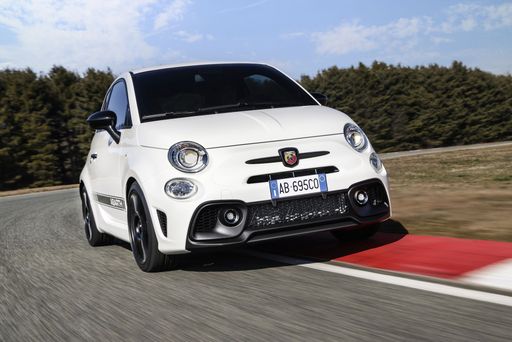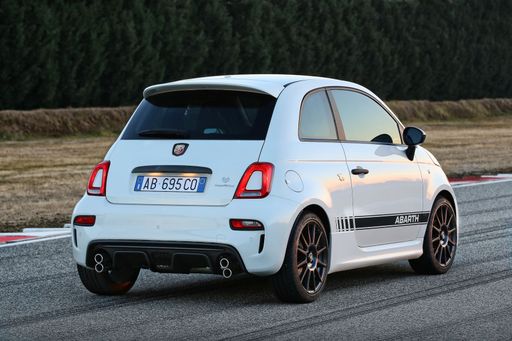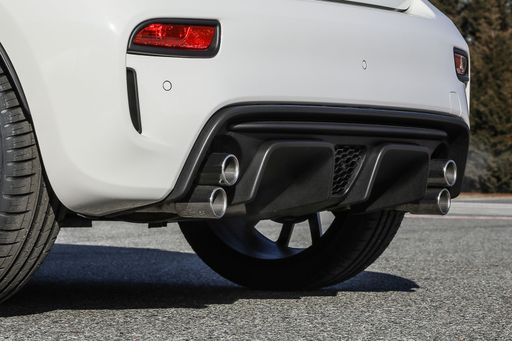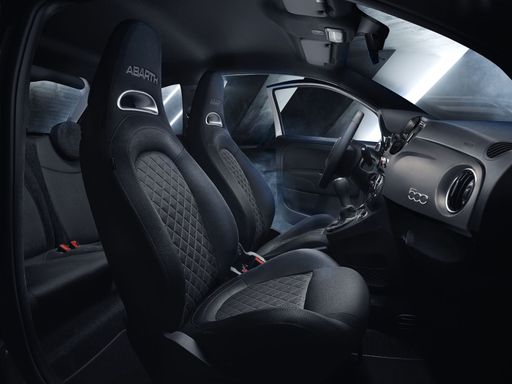Abarth 500 595 695 vs Porsche Cayman – Which one offers the better deal?
Both models have their strengths – but which one suits you more?
Compare performance, efficiency, price and space directly: Abarth 500 595 695 or Porsche Cayman?
Costs and Efficiency:
When it comes to price and running costs, the biggest differences usually appear. This is often where you see which car fits your budget better in the long run.
Abarth 500 595 695 has a clearly advantage in terms of price – it starts at 32600 £, while the Porsche Cayman costs 136000 £. That’s a price difference of around 103466 £.
Engine and Performance:
Power, torque and acceleration say a lot about how a car feels on the road. This is where you see which model delivers more driving dynamics.
When it comes to engine power, the Porsche Cayman has a convincingly edge – offering 500 HP compared to 155 HP. That’s roughly 345 HP more horsepower.
In acceleration from 0 to 100 km/h, the Porsche Cayman is clearly quicker – completing the sprint in 3.40 s, while the Abarth 500 595 695 takes 7 s. That’s about 3.60 s faster.
In terms of top speed, the Porsche Cayman performs significantly better – reaching 315 km/h, while the Abarth 500 595 695 tops out at 155 km/h. The difference is around 160 km/h.
There’s also a difference in torque: Porsche Cayman pulls decisively stronger with 450 Nm compared to 235 Nm. That’s about 215 Nm difference.
Space and Everyday Use:
Cabin size, boot volume and payload all play a role in everyday practicality. Here, comfort and flexibility make the difference.
Seats: Abarth 500 595 695 offers significantly more seating capacity – 4 vs 2.
In curb weight, Abarth 500 595 695 is barely noticeable lighter – 1410 kg compared to 1490 kg. The difference is around 80 kg.
In terms of boot space, the Abarth 500 595 695 offers slight more room – 185 L compared to 184 L. That’s a difference of about 1 L.
In maximum load capacity, the Abarth 500 595 695 performs convincingly better – up to 550 L, which is about 278 L more than the Porsche Cayman.
When it comes to payload, Abarth 500 595 695 noticeable takes the win – 385 kg compared to 281 kg. That’s a difference of about 104 kg.
Who wins the race?
The Abarth 500 595 695 proves to be leaves the rival little chance and therefore becomes our DriveDuel Champion!
Abarth 500 595 695 is the better all-rounder in this comparison.
 @ Abarth / Stellantis Media
@ Abarth / Stellantis Media
Abarth 500 595 695
Abarth 500 595 695
The Abarth 500, particularly in its 595 and 695 renditions, captures the spirit of Italian motoring with its compact yet aggressive design. Known for its lively performance and distinctive styling, this little powerhouse is a joy to drive, offering an engaging experience that appeals to enthusiasts. With its rich motorsport heritage, the Abarth 500 embodies the essence of fun and excitement on both the streets and the race track.
details @ Abarth / Stellantis Media
@ Abarth / Stellantis Media
 @ Abarth / Stellantis Media
@ Abarth / Stellantis Media
 @ Abarth / Stellantis Media
@ Abarth / Stellantis Media
 @ Abarth / Stellantis Media
@ Abarth / Stellantis Media
 @ Abarth / Stellantis Media
@ Abarth / Stellantis Media
 @ Abarth / Stellantis Media
@ Abarth / Stellantis Media
Porsche Cayman
The Porsche Cayman stands out as a quintessential sports car, blending sleek design with dynamic handling. Its mid-engine layout provides an excellent balance and sharp agility that driving enthusiasts crave. Inside, the Cayman offers a refined and driver-focused interior, ensuring that every journey is an exhilarating experience.
details
 @ Abarth / Stellantis Media
@ Abarth / Stellantis Media
|
|
|
|
|
Costs and Consumption |
|
|---|---|
|
Price
32600 - 39400 £
|
Price
136000 £
|
|
Consumption L/100km
-
|
Consumption L/100km
13 L
|
|
Consumption kWh/100km
17.1 - 18.8 kWh
|
Consumption kWh/100km
-
|
|
Electric Range
242 - 265 km
|
Electric Range
-
|
|
Battery Capacity
37.80 kWh
|
Battery Capacity
-
|
|
co2
0 g/km
|
co2
295 g/km
|
|
Fuel tank capacity
-
|
Fuel tank capacity
54 L
|
Dimensions and Body |
|
|---|---|
|
Body Type
Hatchback
|
Body Type
Coupe
|
|
Seats
4
|
Seats
2
|
|
Doors
3
|
Doors
2
|
|
Curb weight
1410 - 1435 kg
|
Curb weight
1490 kg
|
|
Trunk capacity
185 L
|
Trunk capacity
184 L
|
|
Length
3673 mm
|
Length
4456 mm
|
|
Width
1682 mm
|
Width
1822 mm
|
|
Height
1518 mm
|
Height
1267 mm
|
|
Max trunk capacity
550 L
|
Max trunk capacity
272 L
|
|
Payload
370 - 385 kg
|
Payload
281 kg
|
Engine and Performance |
|
|---|---|
|
Engine Type
Electric
|
Engine Type
Petrol
|
|
Transmission
Automatic
|
Transmission
Automatic
|
|
Transmission Detail
-
|
Transmission Detail
Dual-Clutch Automatic
|
|
Drive Type
Front-Wheel Drive
|
Drive Type
Rear-Wheel Drive
|
|
Power HP
155 HP
|
Power HP
500 HP
|
|
Acceleration 0-100km/h
7 s
|
Acceleration 0-100km/h
3.40 s
|
|
Max Speed
155 km/h
|
Max Speed
315 km/h
|
|
Torque
235 Nm
|
Torque
450 Nm
|
|
Number of Cylinders
-
|
Number of Cylinders
6
|
|
Power kW
114 kW
|
Power kW
368 kW
|
|
Engine capacity
-
|
Engine capacity
3996 cm3
|
General |
|
|---|---|
|
Model Year
2023
|
Model Year
2021
|
|
CO2 Efficiency Class
A
|
CO2 Efficiency Class
G
|
|
Brand
Abarth
|
Brand
Porsche
|
Is the Abarth 500 595 695 offered with different drivetrains?
The Abarth 500 595 695 is offered with Front-Wheel Drive.
The prices and data displayed are estimates based on German list prices and may vary by country. This information is not legally binding.
